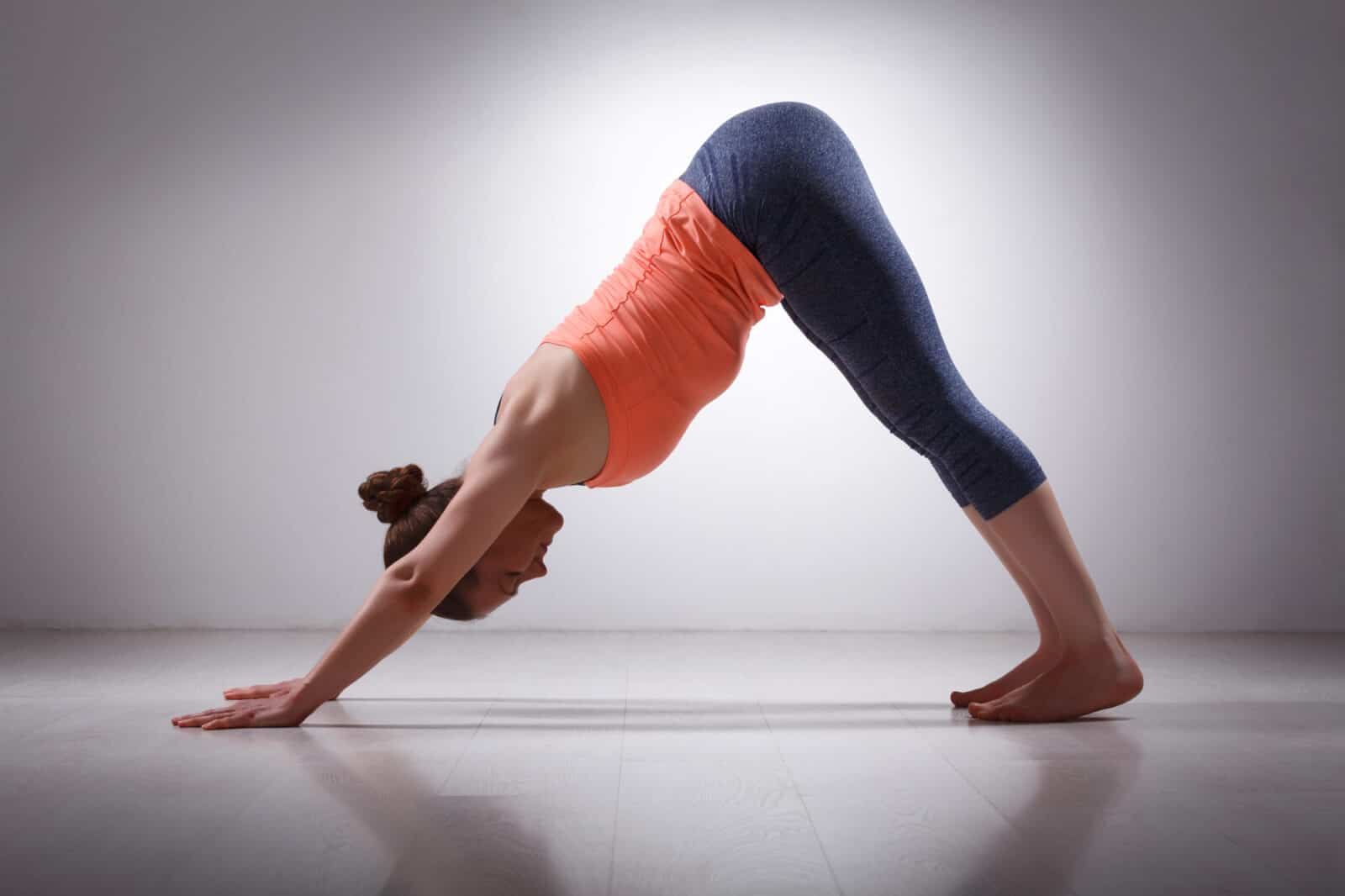
adho = downward
mukha = face
svana = dog
How to Get Into It
- Start on all fours. Please note: the palms are located strictly under the shoulders, the feet are hip-width apart.
- Align your palms and wrist in parallel with each other and press the middle palm line to the mat. Hands are solid and well-rooted on the floor. Ground your knuckles.
- On an exhale, push yourself away from the floor and send the tailbone up. Try to tuck the tailbone a little to get a soft spine stretch. Keep your back straight and push your abdomen toward the outer things. Bend your knees a little if you feel stiffness in the lower back or your back is rounding.
- Relax your feet. Touching the floor with your heels is optional.
- During the exercise, hold Mula Bandha.
Beginners can hold the position for about 15 seconds. Advanced practitioners increase the time to 1-2 minutes.
Benefits
- Gently stretches the spine, preventing displacement and intervertebral hernia. Helps strengthen the heart;
- Allows to strengthen muscles of the core, feet, and ankles;
- Gently stretches the muscles of the thighs, tendons of the lower extremities, and relaxes the lower back, relieves pain and tension in the neck and shoulders
- Improves digestion;
- Calms down and treats insomnia and fatigue.
Safety
Avoid dog pose if you have high blood pressure, retinal detachment, weak eye capillaries, dislocation or other shoulder injuries, carpal tunnel syndrome (compression of a nerve that prevents you from resting on your palms), diarrhea, headache, or late pregnancy.
It is better to stop doing the down-dog in case of dizziness.
Modifications
There are simplified and sophisticated variations of the pose for beginners and advanced yogis.
Beginner: If you have pain in your wrists and cannot rest your palms on the floor, use your fists to strike a pose. This will keep your wrists from bending and make your fists a continuation of the straight line of your arms. If your stretch does not allow you to straighten your knees and place your feet on the floor, then you can stand on your toes with your knees slightly bent.
Upward-Facing Dog (Urdhva Mukha Svanasana)
Pro: Expand your shoulders even more and, bending in the thoracic region of the back, lower the top of the head to the floor.
Common Mistakes
Round back
To prevent lower back flexion, you need to tighten the abdomen and buttocks – this will provide us with excellent stabilization and, most importantly, the safe and correct position of each vertebrae.
Elbows aren’t aligned properly
Point the elbows outward, and spread the fingers wide apart. To avoid elbow hyperplasia, pretend you are playing the piano. You then tighten the muscles correctly and protect the joint from over-extension. It is also helpful to point your thumbs towards each other and tighten your shoulder blades hard.
Your knees point inward
The knees should be facing outward, and the toes should be parallel to each other. Thanks to the gentle rotation of the knees, we will activate the gluteal muscles.
Shoulders squeeze your neck
Hanging on your shoulder blades is a big mistake, as well as pressing them to your ears. Not only is this dangerous and can permanently damage the blade joint and shoulder hoop, but it is simply ineffective. Plus, this puts excessive tension on the neck and back of the head. The shoulder blades should be constantly twisted – that is, pulled down and away from your ears.
Soft relaxed belly
Contrary to appearance, it is an exercise that not only makes you flexible but also strengthens you. The abdomen should be neatly taut. This can be obtained by rolling the pelvis or simply pulling in the stomach. If we do not do this, our entire center, responsible for stabilization, is deactivated.